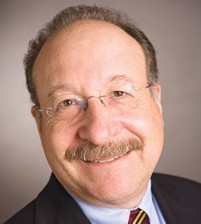With pension measure dead, Ventura County needs a new fix

Henry Dubroff
“You can check out any time you like, but you can never leave.”
Whether or not The Eagles’ classic rock song, “Hotel California,” was written as an homage to the former Camarillo State Hospital, now the campus of CSU Channel Islands, one thing about it rings true.
When it comes to the Ventura County pension system, even if voters were to elect to check out, it would be nearly impossible for the county to leave.
Ruling from the bench on Aug. 4, Ventura County District Court Judge Kent Kellegrew tossed out a hotly contested ballot initiative that would have converted the county’s $3.5 billion defined benefit plan to a 401(k)-style offering known as a defined-contribution plan. Over time, proponents said, the transition to the new plan would reduce or eliminate an estimated $1 billion shortfall.
The proponents had garnered plenty of signatures to qualify for the November ballot but a union group sued over the measure. Kellegrew accepted on its face the argument that the county’s voters cannot elect to depart a system that was created by the California legislature.
“This court concludes that the initiative process cannot be used for such a process,” he wrote in a final ruling.
The proponents of the pension reform measure, led by the Ventura County Taxpayers Association, have said they don’t plan to appeal the ruling. They will instead focus on statewide reform efforts.
Kellegrew’s ruling, which seems soundly grounded in state law, came as no surprise to several top Ventura County officials I spoke with informally before the decision was announced. What was surprising to nearly all the participants was the timing of Kellegrew’s decision, which came down in preliminary form before oral arguments were heard.
Unless an appellate court reinstates the ballot measure, officially called the “Sustainable Retirement System Initiative,” getting a vote of the California legislature to allow Ventura County to remove itself from a system that 20 counties adopted in the 1940s seems a very tall order.
What now remains to be seen is how far state and local officials can go to reform a system that remains badly broken. For many county and city governments, pensions now eat up 10 percent of total budgets and 20 percent of total employee costs.
Gov. Jerry Brown made some reforms part of his 2012 legislative agenda and those reforms, which became effective in January, are just now coming into place. For new hires under the state’s CalPERS system, there are new benefit formulas, benefit caps and a cost-sharing arrangement.
While Kellegrew’s ruling says Ventura County can’t abandon the defined benefit program set up 70-odd years ago, the county, its human resources staff and its unions have agreed on changes over the years.
A year ago, the county and the Service Employees International Union agreed on a series of reforms to the defined-benefit plan. And the county’s retirement association agreed to a new formula for projecting future investment returns reducing them to 7.75 percent from 8 percent annually.
This year’s pension reform effort in Ventura County has had its share of surprises. Few people initially expected it to qualify for the November ballot, but even fewer expected Judge Kellegrew to toss it out so abruptly.
Even if Kellegrew is correct on the law, there’s little doubt that the legislators who voted to allow 20 California counties to set up their own pension plans in the World War II era ever dreamed that pensions would be much more than a tiny fraction of local government costs. Or that ballooning pensions would lead some California governments to file for bankruptcy.
Even the so-called “Hotel California” did not survive a wave of reform in the way California treats mental health patients. The shuttered mental heath hospital in Camarillo is now providing a service with a broader and longer-lasting impact on Southern California as the newest member of the California State University system.
• Contact Henry Dubroff at [email protected].









